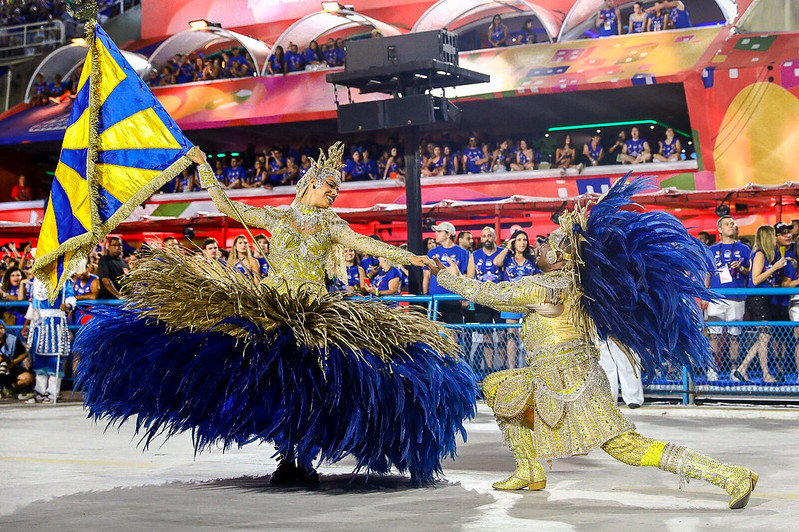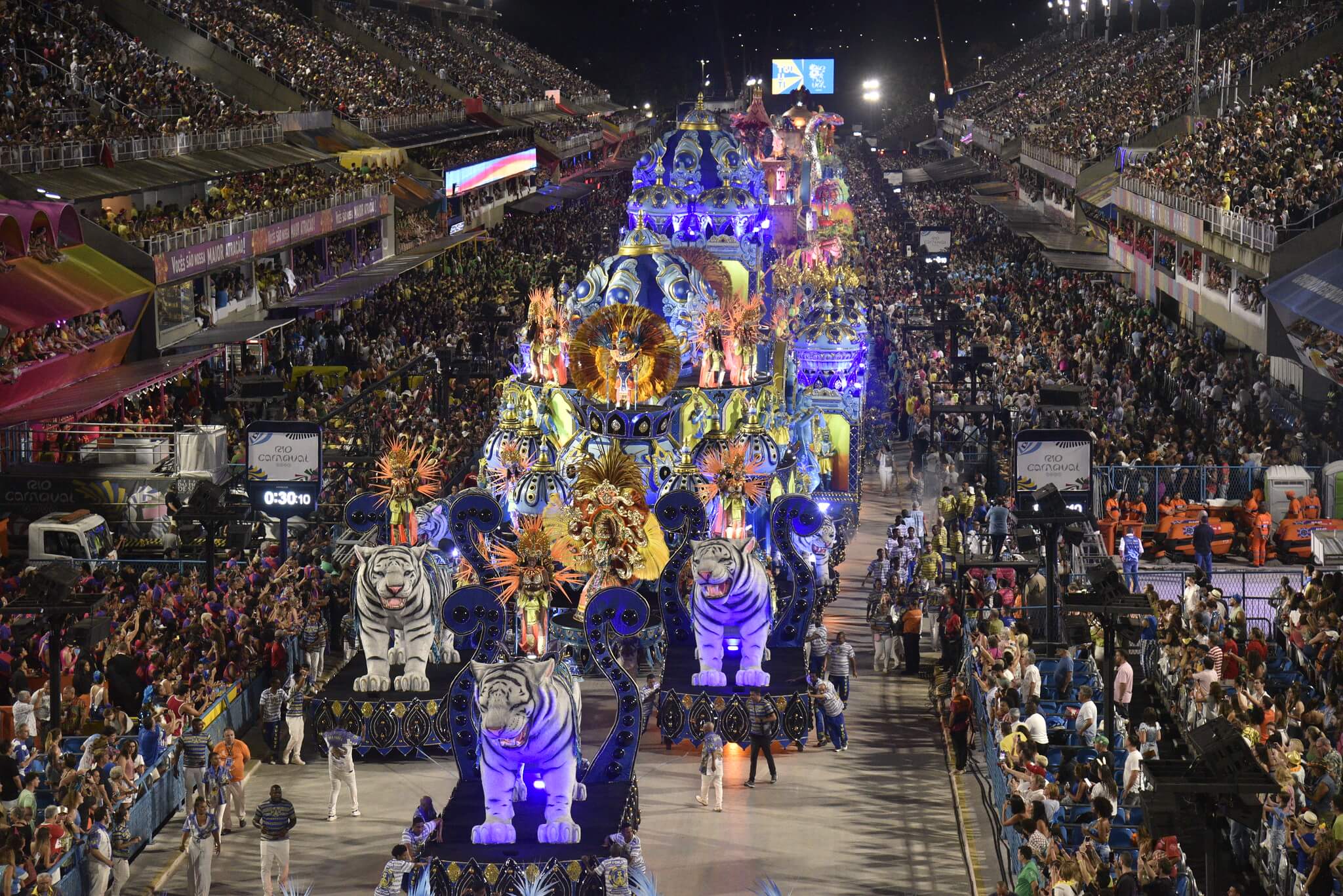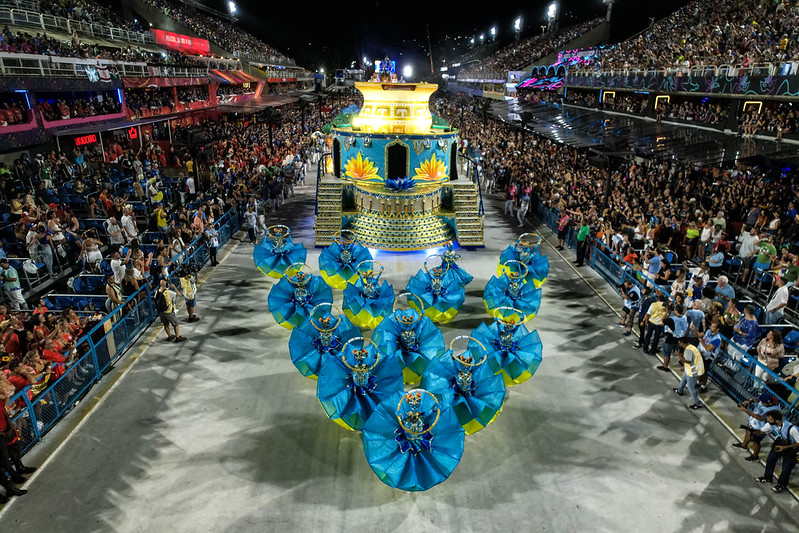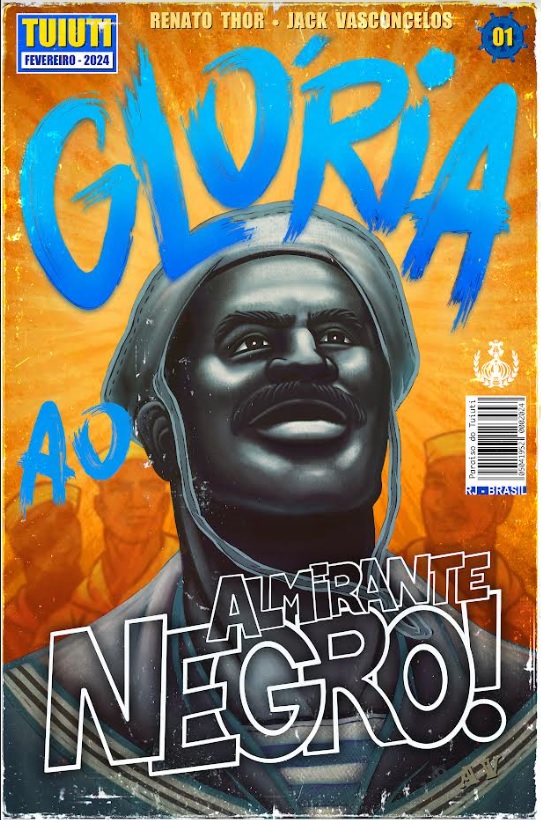- Your cart is empty
- Continue Shopping
Tuiuti paradise






Technical Sheet 2024
- Plot: “Glory to the Black Admiral!”
- Carnivalesque: Jack Vasconcelos
- President: Renato Thor
- Carnival Director: Andre Goncalves
- Interpreters: Pixulé and Grazzi Brazil
- Drum Master: Marco
- Drum Queen: Mayara Lima
- Master of Ceremonies and Flag Bearer: Raphael Rodrigues and Dandara Ventapane
- Front Committee: Claudia Mota and Edifranc Alves
“GLORY TO THE BLACK ADMIRAL!”

GRES Tuiuti Paradise | Carnival 2024
Synopsis – SUMMARY
We do not even believe that slaves once existed in such a noble country. Today the red glow of dawn finds brothers, not hostile tyrants. We are all equal! Brazil, between the twilight of the nineteenth century and the dawn of the twentieth century.
João Cândido Velho and Inácia Cândido Velho knew slavery well and the daily sweat of hard work insisted on not recognizing the difference between present and past; but their son, João Cândido Felisberto, was born under the shadow of freedom that spread its wings over us, but he would not escape his inheritance.
Proud as a black lancer with a red scarf, there went the boy riding the chestnut horse through the gaucho lands of the farm in the village of Encruzilhada. A little black boy from the herd working with the cattle with bells and ribbons, a boy with his feet on the ground, the wind in his nostrils, his eyes on the horizon and his head on the boats he saw floating along the rivers carrying rice, wheat, animals... Wandering... Sailing... It was life, arduous toil dressed in dreams to be better fulfilled.
As a young man, without a harness that would fit him and a future that would guarantee him, his fate was to anchor in the Navy. This, by the way, is the destiny of many of those abandoned by such winged freedom. Inglorious fighters, pirates, party animals, drunkards, sorcerers, those who did not have the dignity of a master of ceremonies would serve to be sailors. Between desperate enlistments, police stations and correctional facilities, the sailors were recruited, while the good stock of the upper social classes starred in the leadership positions, high ranks.
Distinctive hierarchy traditionally maintained by brute force. Mistreatment and shameful pay to sailors were legitimized by the “big house”, always with its beloved whip in hand. The deck was an altar for the colonial fetish that bled the backs of saints amidst songs and the beating of drums in a normalized solemnity. A trunk hidden by a mast. A slave ship’s hold. Slavery tattoos that marked the flesh of the people in the hold.
Time and wind in the federal capital made the young João Cândido, skilled, dedicated, charismatic among his peers and well-received by the officers, become a first-class sailor. His military career took him to seas never before imagined by the farm boy: he visited ports in several countries, sailed through the Amazon and even broke through the forest in an armed struggle in the forest to expel the Bolivians from the lands of Acre. He traveled to England to follow the construction and learn how to handle the powerful dreadnought battleships, named Minas Gerais and São Paulo, ordered by Brazil to reinforce the firepower and enhance the Navy.
Many considered this to be a very ostentatious action in a scenario where there was no imminent war to face and the number of enlisted personnel was so weakened. There, he and his colleagues attended a union meeting for the first time. The sailors' ears were filled with stories about strikes, movements to improve the situation of sailors, and the great rebellion that took place on the Russian battleship Potemkin, which rose up against the poor food on board. They felt a fresh wind blow over their hulls, tired of humiliation, when they learned about the achievements of better conditions and treatment by their foreign colleagues. With lessons learned and courage in their hearts, they would return different. Determined to stand up against the injustices they had suffered.
Upon crossing the equator on his way back home aboard the Minas Gerais, wearing captain's stripes on his wrists, João Cândido was acclaimed as the god Neptune by the crew in the traditional homecoming celebration. Hail to the mermaids, whales, and sailor-tritons! Hail to black Neptune! It was the symbol of an alliance. A leader was born.
The sailors' dissatisfaction became increasingly evident, even externalized, and the insurrection movement began to take shape in the holds of ships and in committees. Rebellion was necessary.
It was then that an event precipitated the plans. An order to apply two and a half hundred lashes to a sailor accused of the “crime” of bringing cachaça onto the ship turned the waters of Guanabara red in a spectacle of cruelty. The feeling of indignation, which had been pent up for a long time, burst forth and, as the famous modern song of deeds says, the Dragon of the Sea of Ceará reappeared in the brave sailor João Cândido in the middle of the Rio de Janeiro bay. That night the clarion calls of Minas Gerais did not call for retreat but for combat. Shouting “freedom” and “down with the whip”, the rebels engaged in battle against the officers, red waterfalls gushing from their white uniforms, and took control. Leader of the revolt, João, with a red scarf around his neck like a black lancer from Rio Grande, commanded the stages. Rio de Janeiro, then the capital of the Republic, was confronted by the most modern and powerful warships in the world, their cannons pointed at it, red flags flying and demanding an end to hunger and the whip. The boom of the first cannon shots shook the city. The newly inaugurated president, Marshal Hermes da Fonseca, left the ball at the Tijuca Club in full swing and headed to the Catete Palace, where he received the warning from the mutineers, with their demands and the threat of bombing the city and the vessels that did not join the movement if the government refused. Such audacity was astonishing.
In the morning, the population gathered on the beaches and hills to watch the majestic movement of the imposing Minas Gerais, São Paulo, Bahia and Deodoro across the bay, the wonder of that moment. But curiosity soon gave way to despair when a few more shots from low-caliber cannons were fired to scare the government and provoked a desperate movement of escape (of the more affluent) to the mountainous region and (of the less favored) to the suburbs. Newspapers and periodicals reported the extraordinary situation louder than the sound of the gunshots. They quickly made famous the figure of the much-talked-about “black admiral”, as the writer João do Rio began to call him in Gazeta de Notícias.
After a few days of political blunders in the face of something so unusual, the government gave in and promised to improve treatment and working conditions, and eliminated the whip from the Navy's modus operandi. The Senate, supported by Rui Barbosa's impassioned speech, approved an amnesty law for the rebellious sailors. With these measures, the red flags were lowered and the cannons were disarmed. The sailors had succeeded. The black admiral had won. No one would go hungry again. No one would be whipped again.
They just didn't count on the betrayal of the marshal president in not fulfilling the amnesty agreement and sending some of the rebels to prison and the rest on a dark journey of no return on the ship Satélite. Throwing more than a dozen companions into a small, unsanitary cell on Snake Island, João saw them succumb to poisoning from the lime thrown into the prison. Survivors? Only he and one other. Even with his health shaken, he remained imprisoned. Chained to the hallucinations and nightmares of that chamber of terror, he returned delicacy to the world by embroidering on sails-fabrics of hope that unfurled his "love" and desire for freedom. The strong storm that was passing through the sailor made him dock at the Hospital for the Insane on Praia Vermelha. They said that man of the sea was crazy.
Some time later, free from the fantasy of insanity, under the protective mantle of the Brotherhood of the Church of Our Lady of the Rosary, which provided his defense, he was tried by the Court of Martial. Finally acquitted, but dismissed from the Navy, he continued to be persecuted by the authorities. The great rebel leader who ensured the victory of the fleet's revolt would go on to earn his living as a fisherman in the same waters of the bay that was the scene of his adventure, on the stepping stones of the pier at Praça XV. The sea was his friend, he never let him down.
Brazil, after the twentieth century and moving into the twenty-first century.
João Cândido Felisberto knew the legacy of slavery, and became a symbol of the fight against injustice and of leadership. He is hailed by the people. Sung, verses, written, performed, painted, tattooed, honored in samba schools… Hail to the Black Admiral! The greatest hero of OUR country. The hero of the people. Raised in bronze, he stood in a square facing Guanabara Bay. A necessary monument to amplify voices against the whip that still insists on being used in our society today.
We do not believe that the slaves of yesteryear are still seen and treated as they were in such a noble country. Today the red glimmer of dawn finds not brothers, but hostile tyrants. We are not all equal!
As long as there are those who defend dictatorships, there will be a whip in hand, after all, it wasn't that long ago...
Jack Vasconcelos
School Titles
2016
Champion
2011
Champion
1997
Champion
1987
Champion
Technical Sheet
- Foundation: 05/04/1952
- Colors: Golden yellow and peacock blue
- President: Renato Thor
- Block: ZIP Code 20921-440
- Shed: Samba City (Warehouse No. 03) – Rivadávia Correa Street, No. 60 – Gamboa – ZIP Code: 20.220-290
- Website: http://gresparaisodotuiuti.com.br/
The History of Tuiuti Paradise
Paraíso's performance was initially discreet, but in 1968, with Júlio Matos' plot paying homage to the São Cristóvão neighborhood, it took first place in Group 3 and went to Group 2. The following year, it achieved third place in Group 2, one point behind Unidos do Jacarezinho, the runner-up.
In fact, until the early 1980s, almost no one had heard of the school, but from then on, the school experienced a moment of great euphoria, thanks to the efforts of carnival designer Maria Augusta Rodrigues, who gave the Group A title to the school that had no patron, a phenomenon typical of large schools, which confer fame and prestige on those who approach them. Paraíso do Tuiuti could only count on the small official subsidy to cover the high expenses that Carnival, with the characteristics it has taken on today, demands. At the end of the 1990s, the school continued to grow and strengthen, until, invited to participate in Group A in 2000, it presented the theme about Dom Pedro II and was crowned runner-up, in a tiebreaker with the school Em Cima da Hora, acquiring the right to parade in the Special Group in 2001.
In the Special Group, the school told the story of a Moor who left Spain for Mecca and ended up in Brazil, fighting in the Quilombo dos Palmares. Considered an underdog in the Access Group A in 2000, the school adopted it as its mascot and brought it to África Livre. The school had many problems with its floats. In 2002, back in the Access Group, Tuiuti ended the parade at dawn, with a break in the rain and few people in the stands. The theme was a tribute to carnival artist Arlindo Rodrigues, famous for his previous carnivals in Salgueiro and Imperatriz.
In 2003, Tuiuti stood out in the access group. With a theme in honor of the centenary of painter Cândido Portinari, it presented a creative parade developed by carnival designer Paulo Barros. The front commission entered with skirts made of rotating brushes, dressed as a palette of watercolor paints. In the opening float, the large crown, the school's symbol, was made with 7,500 cans of paint, including lids covering the floor, creating a beautiful visual effect. The float with sculptures of black people carrying bags of coffee, without live figures and with light cannons from below, also caused an impact, as did the float that brought scarecrows from cornfields that choreographed to scare away the crows. Despite the third place, the parade was so surprising that Unidos da Tijuca invited Paulo Barros to develop the theme of the Borel school in 2004 in the Special Group, writing a new history of Rio's carnival.
In 2004, once again closing the access group parades, Tuiuti paid tribute to poet Vinícius de Moraes, developed by carnival designer Jaime Cezário, but did not stand out. The following year, it paid another tribute, this time to journalist Ricardo Cravo Albim, but ended up being relegated to Access Group B.
In the following years, he tried to move up a group, but only in 2008, with a plot about the samba singer Cartola, he achieved second place and returned to Access Group A again in 2009.
In 2009, Tuiuti brought roulettes, dice and cards full of colors and sparkles to revive the era of luxury and wealth that marked the imposing Urca Casino.
For the 2010 Carnival, the school used the same theme as in 1990, a tribute to the writer Eneida de Moraes. However, it was not a re-edition, but rather a reinterpretation, where new ideas were added, such as a reference to the virtual Carnival. In 2010, the school finished in 12th place and was relegated to Group B in 2011, along with Unidos de Padre Miguel. After the relegation, the school had to leave its court due to an injunction imposed by the DER-RJ.
On its return to Group B, the school from São Cristóvão brought as its theme The Sweetest Barbarian – Caetano Veloso about the singer Caetano Veloso, by carnival designer Eduardo Gonçalves. It held a parade that was a candidate to win, including the honoree parading. Daniel Silva was the interpreter and Gracyanne, the drum queen.[14] The last school to parade on Tuesday, in Sapucaí, with this parade, it obtained the title of Access Group B.[15]
For 2012, the school hired carnival designer Jack Vasconcelos, who was at Viradouro, and Mestre Celinho (ex-Unidos da Tijuca), who had been away from carnival for a few years. Entitled “A tal mineira”, the plot would be about Clara Nunes.[16] It finished in last place, but, due to a maneuver that revoked LESGA's rights, it remained in access group A. In 2013, it continued in the same line of tributes, this time to comedian Chico Anysio.
In August 2013, Renato Thor resigned from his position as president of the association to dedicate himself to the vice-presidency of LIERJ, leaving his father, Jorge Honorato, in his place.[18] He brought in the experienced carnival designer Severo Luzardo to recreate the classic samba-enredo Kizomba – A festa da Raça, with which Vila Isabel was crowned champion of the Special Group in 1988.[19][20] A few months before the parade, the school considered dismissing Claudinho Tuiuti from the command of the drum section,[21] which ended up not happening. Highly praised in its parade, the school remained in the same group for the following year.
In 2015, the school decided to bring back Jack Vasconcelos as its carnival designer, who surprised everyone with a plot with an indigenous theme, “Curumim chama Cunhantã que eu vou contar…”, which was based on a book by the writer Hans Staden. With a surprising parade, with its front commission as the highlight, the school ended up taking 5th place.
For 2016, the school kept Jack Vasconcellos, although he also signed the União da Ilha carnival. Daniel Silva continued to lead the school's sound truck and, at first, would be paired with Ciganerey (who even recorded the Series A CD), but he was called to take over the main microphone for Mangueira due to the death of the interpreter Luizito. However, Daniel was joined by Leandro Santos, who had left Estácio de Sá. The drum section was continued by the award-winning Mestre Ricardinho, aiming to bring 120 points to the school in this category, since in 2014 and 2015 the Super Som drum section guaranteed the maximum score (40 points) for the group. With the theme “A Farra do Boi” (The Farra do Boi), the school put on an exciting parade and won the Series A, losing only 0.1 of the 270 possible points, thus guaranteeing its return to the Special Group after 15 years.
For the 2017 carnival, the school was reinforced with the experienced Mestre-Sala and Porta-Bandeira couple Marquinhos and Giovanna, from Viradouro, and with the interpreter Wantuir, from Portela. Initially, Wantuir would be paired with Daniel Silva, but he left the school. The theme was “Carnavaleidoscópio Tropifágico” about the 50 years of the Tropicália movement. The school gave a beautiful presentation, but without much prominence. In the count, it finished in twelfth place, but due to the numerous accidents that occurred during the two days of the Samba Schools parade (one of them involving Tuiuti itself, with the last float crushing some people against the fence of Sector 1, injuring around twenty – among those injured was radio host Liza Carioca, who died two months later) LIESA decided to veto relegation to Series A in 2017. Therefore, Paraíso do Tuiuti remains in the Special Group for the 2018 carnival, making its best appearance in the elite of Rio samba – two years in a row.
For the 2018 carnival, the school's theme will be about the 130th anniversary of the Lei Áurea (Golden Law), and its title will be “My God! My God! Is slavery extinct?”. Unlike previous years, Tuiuti chose to commission its samba theme from the school's composers, and will be supported by the interpreter Nino do Milênio (ex-Inocentes de Belford Roxo) and the master-of-ceremonies and flag-bearer couple Marlon Flores and Danielle Nascimento.

